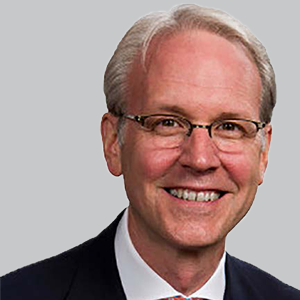Video
Michael Sperling, MD: Noninvasive Techniques in Epilepsy
Author(s):
The director of the Jefferson Comprehensive Epilepsy Center discussed what’s currently being developed in the treatment of epilepsy, as well as the emergence of different methods of stimulation and neuromodulation.
“In an utterly noninvasive fashion, you can put people in an ultrasound delivery machine that focuses multiple beams of ultrasound, and where they intersect is where the action takes place, so to speak. You can deliver damage to a very specific, targeted area of brain within a couple of millimeters.”
The field of epilepsy, like many other neurology specialties, has turned some of its focus toward forms of stimulation and neuromodulation for its treatment in the last few years. And now, coming down the pipeline in epilepsy are a number of possible interventions.
One such therapy is focused ultrasound, which allows for physicians to even disrupt the blood-brain barrier to help the delivery of medications. While it is not FDA approved, it has shown promise thus far. Another 2 methods which have regulatory approval are responsive neurostimulation and deep brain stimulation and have begun to make their mark in the field.
At the 2019 International Epilepsy Congress, June 22-26, in Bangkok, Thailand, NeurologyLive® sat with Michael Sperling, MD, director, Jefferson Comprehensive Epilepsy Center, professor of neurology, Thomas Jefferson University, to discuss these methods of noninvasive interventions in epilepsy care.
For more coverage of IEC 2019, click here.
REFERENCE
Sperling M. New therapeutic technologies (focused ultrasound, laser therapy, SEEG, RF ablation and others). Presented at: 2019 International Epilepsy Congress. June 22-26, 2019; Bangkok, Thailand.
Newsletter
Keep your finger on the pulse of neurology—subscribe to NeurologyLive for expert interviews, new data, and breakthrough treatment updates.




